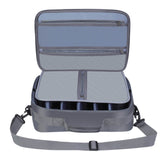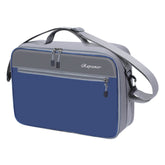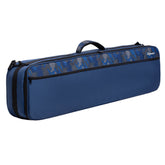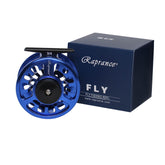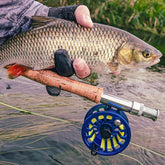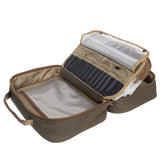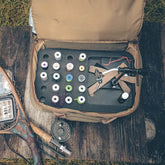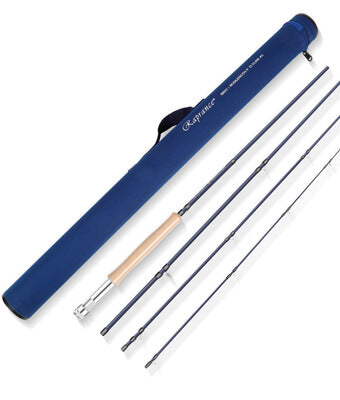Fishing Bag: The Ultimate Guide to Insulated, Fly, Boat, and Kayak Fishing Bags
When heading out for a fishing trip, having the right gear can make all the difference. An insulated fishing bag keeps your catch fresh and your supplies organized, ensuring that everything you need is within easy reach while you're out on the water. Whether I’m fly fishing, boat fishing, or kayaking, the type of fishing bag I choose directly influences my efficiency and enjoyment.

For specialized needs, I often rely on a fly fishing bag that is designed specifically to hold my tackle and tools. Its compartments and features are perfect for keeping everything neat and accessible. A boat fishing bag also plays a crucial role, offering ample space and protection from the elements, while a kayak fishing bag balances functionality and compactness for tighter spaces.
Selecting the right fishing backpack can transform my trip. From keeping my gear safe and secure to offering quick access to essential items, the right fishing bag enables me to focus on what I enjoy most: the thrill of the catch and the serenity of the water.
Materials and Durability

When selecting a fishing bag, it's crucial to consider the materials used and their durability. The right combination can significantly enhance performance in various fishing environments.
Waterproof Materials
I prioritize waterproof materials for my fishing bags to protect gear from moisture. Commonly used fabrics include waterproof nylon and PVC. These materials effectively resist water penetration and ensure that contents remain dry.
Features of Waterproof Materials:
- Waterproof Nylon: Lightweight and durable, offering flexibility and resistance against tearing.
- PVC: Heavier but provides a strong barrier against water and punctures, ideal for rugged environments.
Many fishing bags also utilize waterproof zippers and sealed seams to further prevent leaks. This attention to detail helps to safeguard my equipment, especially during unexpected weather changes or while on a boat or kayak.
Material Durability and Construction
Durability is essential for long-lasting use. Material thickness and construction techniques play significant roles in how well a bag holds up.
I often look for bags with reinforced stitching and abrasion-resistant coatings.
Key Aspects of Durability:
- Reinforced Stitching: Enhances strength and prevents seams from unraveling.
- Abrasion-Resistant Coatings: Protects against wear from contact with rough surfaces.
Many bags feature additional protection through heavy-duty straps and padding, which reduce stress on critical points during transport. Prioritizing durable materials ensures that my fishing bag withstands the rigors of outdoor use, providing reliable performance over time.
Design and Features

The design and features of fishing bags are crucial for enhancing the fishing experience. Key aspects include various storage options and comfort for portability during trips.
Storage and Compartments
I find that effective storage is vital in a fishing bag. Padded compartments help secure tackle and gear, while plastic trays can keep everything organized and easy to access.
Things I appreciate include foldout bait storage pockets for convenient access to live bait. Special pockets for pliers and fishing rod holders add to the efficiency.
Having an ample storage capacity enables me to carry all essential gear without feeling overwhelmed. Waterproof surfaces are also a key feature, ensuring my gear stays dry even in a sudden downpour.
Comfort and Portability
Comfort is important during long fishing trips. With padded shoulder straps, the bag remains comfortable even when fully loaded. I also value the inclusion of carrying handles for quick transport on and off the boat or kayak.
The emphasis on portability significantly enhances my experience. Lightweight materials and ergonomic designs mean I can easily maneuver while carrying my gear.
In addition, integrating ventilation features allows for air circulation, reducing moisture buildup inside the bag. All these design elements combine to make transporting my fishing gear more efficient and enjoyable.
Insulation and Preservation
Effective insulation is crucial for maintaining the freshness and quality of caught fish. Understanding how to use insulated fishing bags and various preservation methods can enhance the fishing experience and ensure the best possible outcome for the catch.
Insulated Fishing Bags
An insulated fishing bag is designed to keep fish at a stable, cool temperature. The insulation material in these bags minimizes the transfer of heat, which is essential for preserving fish during transport.
I prefer bags with high-quality foam insulation, as they provide superior cold storage. Features like waterproof zippers and sealed seams further enhance performance by preventing leakage and moisture buildup.
For cleaning, look for easy-to-clean materials both inside and outside. A simple wipe-down usually suffices, ensuring that the bag remains hygienic for my next fishing trip.
Fish Preservation Methods
Fish preservation involves techniques to prolong freshness after catching. I often rely on ice-packed storage methods. Filling the insulated bag with ice helps to maintain a low temperature, effectively slowing spoilage.
Another popular method is using vacuum sealing. This technique removes air and significantly reduces bacteria growth. Keeping the fish whole or filleted, vacuum sealing can enhance flavor retention.
Additionally, I find that brine solutions can effectively preserve fish, especially for longer trips. Brining adds flavor and moisture while inhibiting spoilage. Each of these methods plays a vital role in ensuring that my catch remains fresh until I’m ready to prepare it.
Specialized Fishing Bags
For specific fishing activities, the right gear can enhance efficiency and enjoyment. Specialized fishing bags cater to unique needs based on fishing style and environment.
Fly Fishing Bags
I find that fly fishing bags are designed with organization in mind. They often feature:
- Multiple compartments: Ideal for separating flies, tippets, and other gear.
- Water-resistant materials: Protects contents from splashes and brief rain.
- Adjustable straps: Allows for comfortable carrying during long hikes to remote spots.
Many models also include external pockets for easy access to tools and leader lines. The compact design ensures that the bag does not hinder movement while casting, giving me the freedom to navigate swiftly from one fishing location to another.
Boat and Kayak Fishing Bags
For boat and kayak fishing, bags must prioritize waterproof protection. I often choose bags with:
- Sealed seams: Prevents water ingress during sudden splashes or rain.
- Hard-bottom construction: Keeps the bag stable on wet surfaces and inside boats.
- Reflective materials: Enhances visibility in low-light conditions for safety.
These bags typically offer ample storage for tackle boxes and larger gear like rods and reels. Some even have built-in cooler sections, ensuring my catch stays fresh for the ride home.

